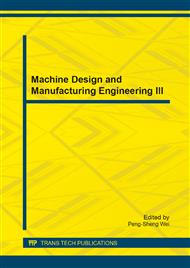p.242
p.246
p.250
p.257
p.264
p.268
p.273
p.278
p.282
Research on Coupled Thermo-Hydro-Mechanical Mechanism for Heavy Oil Thermal Recovery
Abstract:
Thermal production is an important heavy oil recovery method , which bothers with the complex problems of Thermo-Hydro-Mechanical coupling effects and reservoir failure processes due to thermal recovery. Based on the coupling theory of T-H-M, the fully coupling equations of heat transfer, fluid seepage, geomechanics, and reservoir damage are constructed. The Galerkin FEM with fully implicit and sequential iterative algorithm is adopted to solve the coupling equations. Numerical results demonstrate that Thermo-hydro-mechanical coupling effect takes as important roles in thermal process. The response of the rocks surrounding the reservoir has a significant stress transfer, pore pressure increase or thermal cracking. This paper presents an analytical method to predictions coupled geomechanical effects and change of reservoir parameters, which are all important phenomena affecting heavy oil exploitation.
Info:
Periodical:
Pages:
264-267
Citation:
Online since:
July 2014
Authors:
Price:
Сopyright:
© 2014 Trans Tech Publications Ltd. All Rights Reserved
Share:
Citation:


